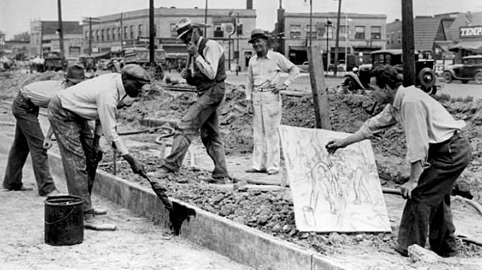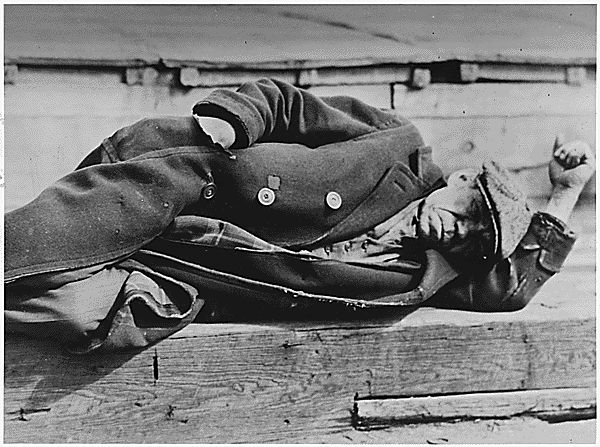Introduction
John A. Garraty is considered to be an outstanding American historian who devoted his life to the presidency of the American Historians Society. He is a significant writer; Garraty is the author of several historical books disclosing the facts of American National Biography. One of the most prominent works of the writer is the book “The Great Depression an Inquiry into the Cause and Consequences of World Wide Depression” which is aimed at the reflection of serious effects resulted from the world tragedy.
The Great Depression Overview
It is necessary to stress that the principal purpose of the book is aimed at presenting the causes and consequences of the great depression describing it as the world crisis breaking the development of major countries. The author tried to show the global economic downtown being originated from the USA in 1929. The peculiarities and effects of the economic tragedy are highlighted from various aspects of its causes.
The central questions of the book run like this: Who are we to blame for the economic disturbance? What are the principal reasons for the depression coming to an end? It is important to note that Garraty tried to prove the meaning of depression for the USA development and show the influence of World War II on the depression end. The analysis of the book is concentrated around the identification of Roosevelt’s fault in the economic downfall suffered by American states. The author managed to demonstrate the positive impact of World War II which led to the end of the great depression.
Some aspects of the book highlight the atmosphere in England in the period of the world depression stating that this country as well suffered challenges in economic and industrial development. The great depression in Great Britain, being called the Great Slump, resulted in unemployment raise and industry devastating; the author underlined the decrease of export level by 50%.
Causes and Consequences
In the research of the background causes of the Great Depression, the author stressed structural weaknesses and economical instability observed in America at early stages and economic downfall. The book is concentrated around major events following the Great Depression which is the following:
- Deflation;
- Trade disruption;
- Unemployment raise;
- Credit and demand drop;
Macroeconomic policies appeared to be the basic grounds for the depression deepening in the USA and other countries. The world financial centers faced bankruptcy and global instability.
The most interesting points described by the author are highlighted through governmental steps aimed at stopping economic downfall in the USA. The first and the principal strategy was not to interfere with the process of market adjustment. Garraty managed to disclose the steps as the following:
- Prevent liquidation;
- The stage of further inflation;
- The rating up of wage;
- The raise of prices;
- Savings discourage stimulation;
- Unemployment subsidizing.
So, Garraty states that policy measures were aimed at lending money to business trying to stimulate banks for further loans providing. Besides, the author stresses that inflation process as the consequence of the great depression events leads to price fall prolonging the economical instability. So-called, “easy money” policy conducted by the US government could result in the prevention of high interest rates in the market operations. Garraty shows that artificial wage rates maintenance during the great depression was the basic insurance of mass unemployment in the states. The decrease of the business demand was called as the main reason for unemployment raise. The effects of the great depression lied in high taxes which could not be paid by the companies and enterprises.

Garraty’s way of problem disclosure shows that he really was interested in the key issues of the economic downfall and enjoyed the process of depression examination. He centralized the aspects of economy workings connecting them with the presidency policy and war events. The author focused on various theories of possible depression causes studied in science; such theories as Keynesian and classical left a print on the thought of the theme disclosure.
Nevertheless, the major part of Garraty’s book is aimed at proving the influence of the World War III on the end of the depression domination all around the world. It is an open secret that the Great Depression ended up with the beginning of the war events; Garraty supports the opinion that global downfall would last for several years but for the war.
Most factors of the Great Depression described by Garraty were connected with monetary aspects; he states that through the depression period it was rather difficult to form strong links between output, supply and prices which put obstacles to financial stability on the American market. Roosevelt’s actions concerning economic stabilization and political policies resulted in the weakening of international trade and political stability. The global crisis appeared to have a number of negative political effects being connected with Roosevelt’s abandonment of established liberal approaches in the sphere of economic. According to the theory developed by Garraty, the president managed to turn the USA into a socialistic state; so, it should be noted that social democracy implementation and weakening of planned economies strategies throughout the world were influenced by the atmosphere and conditions of the Great Depression. National economy was under the impact of unplanned and ineffective governmental strategies leading to the wide promotion of the downfall not only on the territory of the USA but in Germany, Great Britain, etc.
Garraty states that gold standards developed in the countries were completely left during the Great Depression development. As a matter of example, the author described the situation in Great Britain where the government left standards at early stages of crisis. The problem is that pound was under the pressure of speculative attacks impacting the general financial stability. In 1931, financial institutions in the country stopped exchanging pound and gold. Further on, some other countries followed the same strategies; Japan and some Scandinavian states left gold standards at the beginning of depression spreading. Speaking about the USA and Italy, one should state that these countries together with France and Poland tried to maintain established standards as long as possible up to 1939.

The thesis provided by Garraty concerning Roosevelt’s participation in depression promotion worldwide was proved by the president’s attempts to restructure the economy of the USA in order to prevent one more world crisis. Nevertheless, New Deal programs, developed within the country, were aimed at introduction a number of financial reforms; the key provisions were aimed at demand stimulation though restructuring leaf a negative print of the economy stabilization. The book highlights the principle aspects of Roosevelt’s administration:
- Business-government cooperation;
- Farm production cutting;
- Minimum wages setting;
The stages provided by the government attempted to be presented as recovery measures for state stabilization of the economy and one more crisis prevention, though the consequences appeared to be striking.
Garraty managed to describe the events of Great Depression with all its causes and consequences from his personal vision of the problem. He contributed to historical events highlighting by writing a real masterpiece of world literature. The analysis of his work gives an opportunity seeing the influence of author’s personal life on the style of writing and manner of presentation. His life frustrations and family problems following the author’s life influenced the tragedy description and problem disclosure. One should underline the fact that his personal biography was somehow reflected through American history description. The readers can feel Garraty’s mood demonstrated through the book style.
The topic disclosed in the book is of a great interest for modern economists and historians. Some facts described by Garraty are still open to discussion; for example, the identification of macroeconomics factors causing the great depression are not appropriately proved in modern history; the interesting point concerns the beginning of the World War II which, according to Garraty, put an end to the crisis; though this fact was not proved either.
Conclusion
The book “The Great Depression an Inquiry into the Cause and Consequences of World Wide Depression” appeared to be a real masterpiece of modern history; Garraty managed to tough the aspects which are still not completely disclosed in modern science.
The causes and consequences of the greatest world crisis were reflected through the author’s personal problems and instability allowing the readers feeling his style and purpose of data presentation.
References
Garraty, A. John. The Great Depression an Inquiry into the Cause and Consequences of World Wide Depression. Harcourt Brace Jovanovich. 1986.